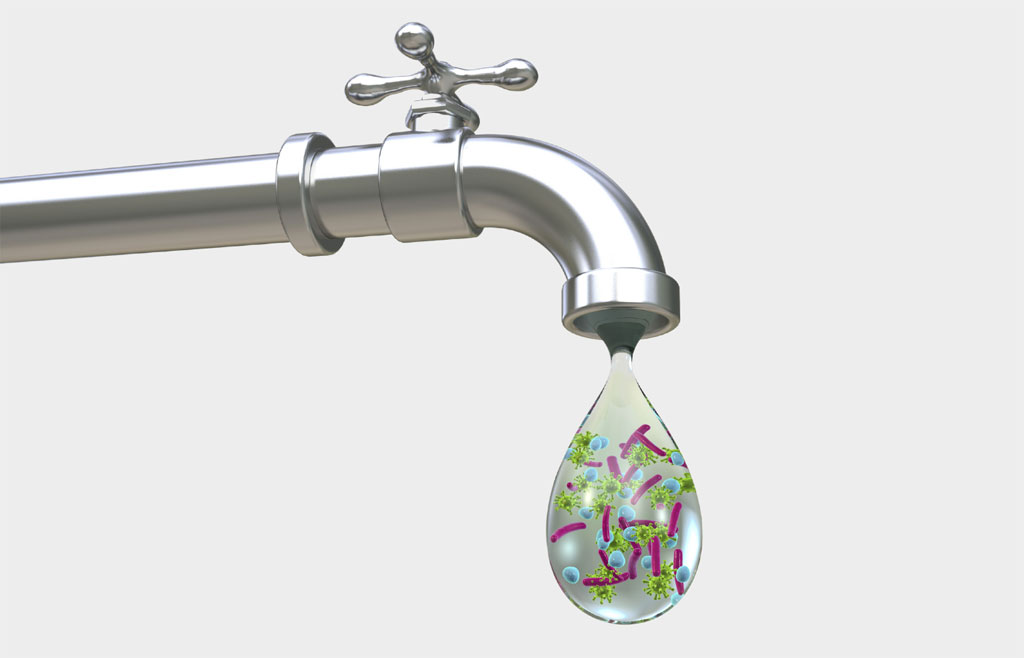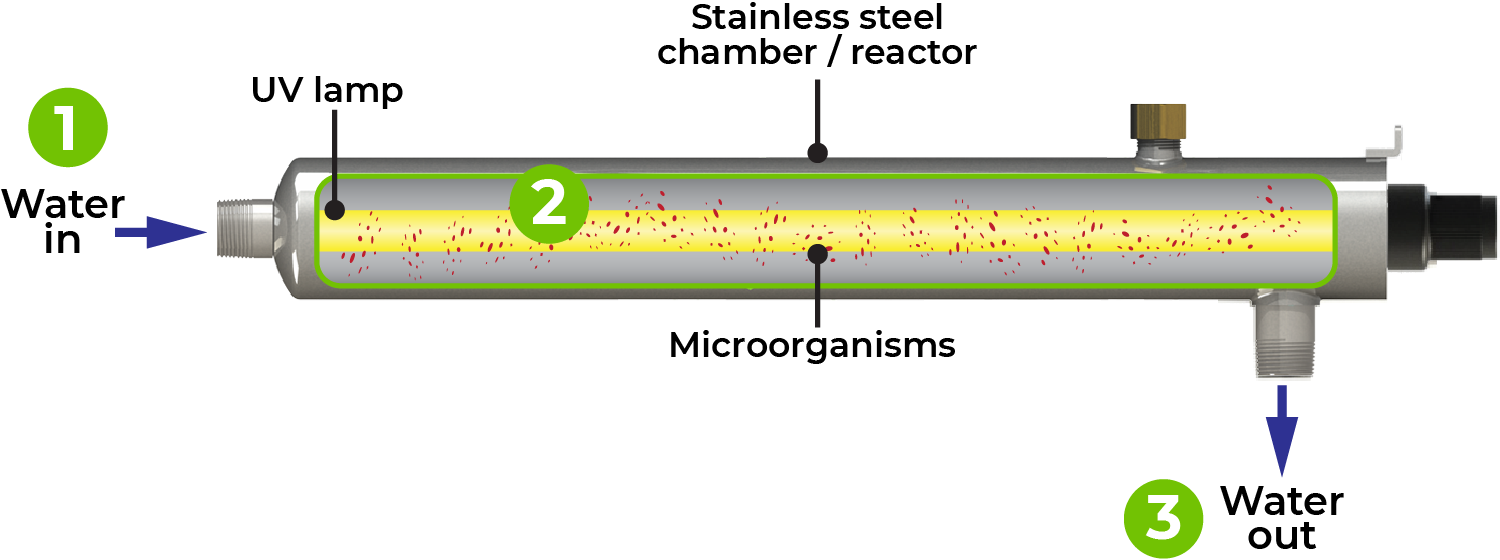Do you worry that the water from your well has hidden impurities that can cause health issues? When guests stay in your home, do they experience unexplained digestion issues? Have you recently heard reports of increased bacteria in nearby well water? When you’re the only one “in charge” of your home well water supply, learning about potential water impurities is a priority.
At Carroll Water, we often hear these questions from residents in southern Pennsylvania (PA) when they inquire about the health risks of hidden water impurities, like bacteria or “forever chemicals” being present in their drinking water. We assure them that they are valid concerns and we remind them that a well, in simple terms, is a hole in the ground with a long pipe system to your faucet. What happens to that water before it gets to the faucet is a great responsibility, especially when compared to public water suppliers (PWSs) that are required to disinfect the water before it reaches the home.

What types of bacteria are found in residential wells?
Four groups of bacteria may be found in well water: coliform bacteria, fecal bacteria, sulfur bacteria, and iron bacteria. Coliform bacteria are the most common bacteria found in well water and are often referred to as “indicator organisms” because their presence could mean disease causing bacteria are more likely to occur.
How do bacteria get into my water?
Bacteria can enter your well water supply from a variety of sources according to the CDC. They may come naturally from the ground, runoff from farm animal wastes, improperly functioning septic systems or contaminated surface water. There is also the growing concern that as storm intensity increases throughout the United States, climate-driven flooding will boost surface water contamination risks when nearby streams, rivers, and lakes overflow into residential water supplies.
In Pennsylvania, bacteria in well water is a common problem. The state has a high population density, and many homes, even in rural areas like southern PA, are built on properties with shallow wells. As a result, bacteria can easily enter the home water system through cracks in the well casing or through small openings where pipes enter the home.
Can bacteria in your well water make you sick?
Well water may contain bacteria that can cause gastrointestinal illness, like vomiting or diarrhea, skin infections, or other problems. There are several strains of coliform bacteria like Escherichia coli (E. coli) that are the most serious pathogens since they have the potential to produce a toxin in your water supply that causes severe illness or death. There are additional strains of bacteria in drinking water that may not make you sick, but they can cause nuisance problems with the taste, smell, or appearance of your water.
What is the acceptable level of bacteria in drinking water?
The Maximum Contaminant Level (MCL) for bacteria in drinking water is zero total coliform colonies per 100 milliliters of water as established by the EPA. However, according to reporting from Lancaster Online, “Pennsylvania’s one million private wells are not monitored by any government agency and no maximum contaminant levels are enforced for private systems.”
So, if bacteria are found in your well water, you will need to take steps to disinfect the waterborne pathogens before using it for drinking, cooking, or bathing. Working with a local water consultant like Carroll Water can help assess how to treat your whole home since some bacteria can create toxins that are not easily destroyed by boiling or short-term disinfectants.
How do you test for bacteria in your well water?
If your water doesn’t come from a public water supply, then residents often choose to have their water tested yearly to monitor for a variety of impurities so they can trust no health risk or damage is occurring to the home water system plumbing, and appliances. Your local or state health departments can assist you with purchasing testing or you can reach out to the national Safe Drinking Water Hotline at 800-426-4791 or visit www.epa.gov/safewater/labs.
When you work with a local department of health to have your home water quality evaluated, there are a variety of water testing methods that a lab will use to detect bacteria in water, including:
- Standard plate count: This method involves incubating a sample of water for 24-48 hours at a specific temperature and then counting the number of colonies that grow on the agar plate.
- Membrane filtration: This method involves filtering a sample of water through a sterile membrane and then incubating the membrane for 24-48 hours at a specific temperature. The number of colonies that grow on the membrane is then counted.
- Enrichment culture: This method involves adding a selective enrichment media to a sample of water and incubating the sample for 24-48 hours at a specific temperature. The enriched sample is then plated on an agar plate and incubated for an additional 24-48 hours. The number of colonies that grow on the agar plate is then counted.
What are the treatment options for wells with bacterial contamination?
To protect yourself and your family, it is important to remove bacteria in the water at the point it enters your home so that you can trust a whole home solution will offer the best protection. Once bacteria have been detected in your drinking water, there are many treatment options available. Chlorination is the most common method of bacteria removal used by PWSs or by a flushing of the well and water system with a chlorine solution to kill bacteria and other microorganisms. The disadvantages of flushing a private well with chlorine are the chemical byproducts it can create and you can smell and taste the chlorine in the water. There are other options including ultraviolet (UV) disinfection and ozonation.
What is UV light water disinfection, and how does it work?
In recent years, bacteria in groundwater have become an increasingly pressing concern for people all over the world. As a result, UV light treatment in the home has become an effective way to eliminate bacteria from water. It is a popular chemical-free way to eliminate bacteria in water and it won’t create harmful byproducts like chlorine.

How UV Lighting Works:
- Water enters the home from a private well and will pass into a UV stainless steel chamber.
- The UV lamp emits light that penetrates the cells of the bacteria and damages their DNA, preventing them from reproducing.
- The water passes out of the chamber into the home water system. The bacteria are unable to grow or spread and safely die off once they leave the chamber.
Not all bacteria are equally susceptible to UV light, however. Some microorganisms, such as Cryptosporidium and Giardia, have protective or thick cell walls that some low-power UV light systems are not able to penetrate. As a result, it is important to make sure the UV light disinfection system is specifically designed to kill these microorganisms if necessary.
UV light will only travel a certain distance in water before it loses its effectiveness. This means that the water must have a certain level of clarity for the UV light to be effective against bacteria so it is often combined with a water treatment filtration system.
Considerations When Well Water is Contaminated by Bacteria
If your water tests positive for bacteria or you want to take a proactive approach to remove water contaminants, you will need to take steps to treat your water to make it safe to drink. An expert water company like Carroll Water evaluates your water and consults with you to plan a unique solution. With proper treatment, it is possible to completely remove bacteria from your water and make it safe to drink and use immediately.
- Water has to be as clear as possible for UV light to be most effective, so your remediation plan may include a water softener for hard water and a filter to remove iron or other sediments.
- Since bacteria can appear anytime in your drinking water based on countless external factors we described, regular testing is recommended. If you want to always be confident in your water, then it’s very common to automatically include UV lighting in your water treatment plan. Once it’s installed you simply change out the UV bulb annually to rely on its effectiveness.
Are you worried about bacteria being present in your drinking water from your private well? Contact Carroll Water today and we will put your mind at ease. Our experts work closely with each of our customers to make sure they have safe, drinkable water throughout their homes.
Carroll Water is an authorized EcoWater Systems dealer serving Pennsylvania, Maryland, and Virginia.


